
Review on 🔌 Motorola MoCA Adapter for Ethernet Over Coax, Plug and Play, High-Speed Connectivity, Enhance Home Network for Improved Streaming and Gaming (2.5 Gbps, Pack of 2) by Ben Diesel

Compatible with TiVo Security!
I bought two of these devices for my home network, which also includes three TiVos devices running MoCA 1.1. TiVos is MoCA 1.1 and the new Motorola devices are MoCA 2.0. To my delight, the Motorola devices worked well with TiVos. Initially I was concerned that I might need to disable TiVo MoCA encryption as it wasn't obvious that the Motorola devices supported any type of encryption, let alone the same encryption. used by TiVos. Fortunately, there is no need to worry. If you google "Motorola MoCA Encryption" you will find a page that describes how to set up Motorola boxes for encryption. And thank goodness this encryption method is compatible with the encryption TiVo uses. I found that when I entered the same 14 digit key into both the TiVo and MM1000, they were able to communicate immediately. I have a TiVo Bolt, a Roamio and a few Minis; no problem with any of them. Encryption is a new feature of the MM1000 and may require a firmware update before you can use it. Look closely in the Motorola manual (see the same page I linked to above) and you'll find a link to the new firmware. I tested throughput in several configurations. With the two devices back-to-back, I achieved full 1 Gb/s unidirectional speed between the two computers using iperf3. (To download this free, open-source benchmarking tool, Google "iperf3") Throughput drops to about 520 Mbps bi-directional, as expected. When connected to the Comcast network, unidirectional throughput dropped to 730 Mbps, presumably because the Comcast cable uses some of the same frequencies. When connected to TiVo in MoCA Bridge mode (which is why TiVo limited it to MoCA 1.1), I got about 130Mbps in unidirectional mode. Only 2GHz splitters are recommended for MoCA 2.0. I first tested the splitters I had at home, which were fairly new 1GHz splitters. I then set the splitter to 2.3GHz and tested again. I got about 700Mbps with 1GHz splitters and 730Mbps with 2GHz splitters. Obviously the difference is small. Firmware updates and configuration changes are performed by connecting a computer to an Ethernet port and accessing the device at the fixed address 192.168.0.2. This means that you cannot configure while two MM1000 are connected to the same network as they have the same address. You must disable COAX prior to setup. That limitation aside, the devices are easy to update and set up with every browser I've tried. There is a setting to change the frequencies used by the MM1000 but I couldn't find any documentation on this so I left it alone. I was also concerned that this might make devices incompatible with my TiVos, and I wanted to avoid that. Perhaps by changing the frequencies used I could avoid Comcast's coverage area and increase the bandwidth. The MM1000 comes with a Point of Entry (POE) filter. A POE filter should always be installed between your MoCA home network and the outside world. The filter eliminates noise from outside while maintaining privacy inside. When two houses in a junction box are connected to the same COAX network (as is the case with Comcast), communication can take place between them. This means your neighbors can see and access your computers as if everything were connected. It's also possible for a hacker to install a hidden listening device on a wire outside your home and use it to hack into the computers inside. You can prevent all of this by (1) installing a POE filter or (2) setting up encryption on your MM1000. I'm kind of paranoid so I did both.
- Optimized Wi-Fi Performance: Easily handles data-intensive traffic over coaxial cable and frees up Wi-Fi bandwidth to increase bandwidth and speed for your wireless devices.
- No Instructions
New products
Comments (0)
Top products in 🖧 Network Adapters

High Gain Wireless Network Adapter - TP-Link Nano USB Wifi Dongle with 150Mbps Speed for PC Desktops and Laptops. Compatible with Win10/8.1/8/7/XP Linux 2.6.18-4.4.3, Mac OS 10.9-10.15 (TL-WN722N)

46 Review

TP-Link Archer T4U Plus AC1300 USB 3.0 WiFi Network Adapter

29 Review
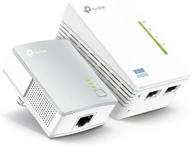
📶 Enhance and Expand Your Network with TP-Link AV600 Powerline WiFi Extender and WiFi Booster (TL-WPA4220 KIT)

44 Review
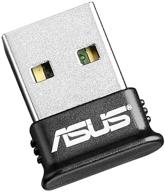
🔌 ASUS USB-BT400 USB Bluetooth Dongle Receiver - Compatible with Laptops and PCs, Plug and Play for Windows 10/8/7/XP. Supports Printers, Phones, Headsets, Speakers, Keyboards, and Controllers in Black.

79 Review
Another interesting products
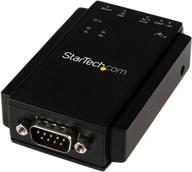
🔌 StarTech.com NETRS232 Serial to IP Ethernet Device Server - DIN Rail Mountable - Serial Device Server - Serial Over IP Device Server (Black)

4 Review

🔌 CERRXIAN RS232 to Ethernet Serial Device Server - TCP/IP Converter with 1Port DB9 RS232 Serial to Ethernet Connectivity

3 Review
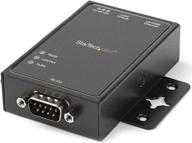
🌐 StarTech.com NETRS2321P: 1-Port RS232 to Ethernet IP Converter, Serial over IP Device Server - Black

5 Review
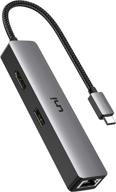
🔌 uni USB C Hub with Ethernet Adapter, 4K HDMI, Gigabit Ethernet, and 3 USB 3.0 Ports for MacBook Pro, iPad Pro, XPS

11 Review

